I’m working on an app that creates it’s own texture atlas. The elements on the atlas can vary in size but are placed in a grid pattern.
It’s all working fine except for the fact that when I write over the section of the atlas with a new element (the data from an NSImage), the image is shifted a pixel to the right.
The code I’m using to write the pixels onto the atlas is:
-(void)writeToPlateWithImage:(NSImage*)anImage atCoord:(MyGridPoint)gridPos;
{
static NSSize insetSize; //ultimately this is the size of the image in the box
static NSSize boundingBox; //this is the size of the box that holds the image in the grid
static CGFloat multiplier;
multiplier = 1.0;
NSSize plateSize = NSMakeSize(atlas.width, atlas.height);//Size of entire atlas
MyGridPoint _gridPos;
//make sure the column and row position is legal
_gridPos.column= gridPos.column >= m_numOfColumns ? m_numOfColumns - 1 : gridPos.column;
_gridPos.row = gridPos.row >= m_numOfRows ? m_numOfRows - 1 : gridPos.row;
_gridPos.column = gridPos.column < 0 ? 0 : gridPos.column;
_gridPos.row = gridPos.row < 0 ? 0 : gridPos.row;
insetSize = NSMakeSize(plateSize.width / m_numOfColumns, plateSize.height / m_numOfRows);
boundingBox = insetSize;
//…code here to calculate the size to make anImage so that it fits into the space allowed
//on the atlas.
//multiplier var will hold a value that sizes up or down the image…
insetSize.width = anImage.size.width * multiplier;
insetSize.height = anImage.size.height * multiplier;
//provide a padding around the image so that when mipmaps are created the image doesn’t ‘bleed’
//if it’s the same size as the grid’s boxes.
insetSize.width -= ((insetSize.width * (insetPadding / 100)) * 2);
insetSize.height -= ((insetSize.height * (insetPadding / 100)) * 2);
//roundUp() is a handy function I found somewhere (I can’t remember now)
//that makes the first param a multiple of the the second..
//here we make sure the image lines are aligned as it’s a RGBA so we make
//it a multiple of 4
insetSize.width = (CGFloat)roundUp((int)insetSize.width, 4);
insetSize.height = (CGFloat)roundUp((int)insetSize.height, 4);
NSImage *insetImage = [self resizeImage:[anImage copy] toSize:insetSize];
NSData *insetData = [insetImage TIFFRepresentation];
GLubyte *data = malloc(insetData.length);
memcpy(data, [insetData bytes], insetData.length);
insetImage = NULL;
insetData = NULL;
glEnable(GL_TEXTURE_2D);
glBindTexture(GL_TEXTURE_2D, atlas.textureIndex);
glPixelStorei(GL_UNPACK_ALIGNMENT, 1); //have also tried 2,4, and 8
GLint Xplace = (GLint)(boundingBox.width * _gridPos.column) + (GLint)((boundingBox.width - insetSize.width) / 2);
GLint Yplace = (GLint)(boundingBox.height * _gridPos.row) + (GLint)((boundingBox.height - insetSize.height) / 2);
glTexSubImage2D(GL_TEXTURE_2D, 0, Xplace, Yplace, (GLsizei)insetSize.width, (GLsizei)insetSize.height, GL_RGBA, GL_UNSIGNED_BYTE, data);
glGenerateMipmap(GL_TEXTURE_2D);
free(data);
glBindTexture(GL_TEXTURE_2D, 0);
glGetError();
}
The images are RGBA, 8bit (as reported by PhotoShop), here's a test image I've been using:

and here's a screen grab of the result in my app:

Am I unpacking the image incorrectly...? I know the resizeImage: function works as I've saved it's result to disk as well as bypassed it so the problem is somewhere in the gl-code...
EDIT: just to clarify, the section of the atlas being rendered is larger than the box diagram. So the shift is occurring withing the area that's written to with glTexSubImage2D.
EDIT 2: Sorted, finally, by offsetting the copied data that goes into the section of the atlas.
I don't fully understand why that is, perhaps it's a hack instead of a proper solution but here it is.
//resize the image to fit into the section of the atlas
NSImage *insetImage = [self resizeImage:[anImage copy] toSize:NSMakeSize(insetSize.width, insetSize.height)];
//pointer to the raw data
const void* insetDataPtr = [[insetImage TIFFRepresentation] bytes];
//for debugging, I placed the offset value next
int offset = 8;//it needed a 2 pixel (2 * 4 byte for RGBA) offset
//copy the data with the offset into a temporary data buffer
memcpy(data, insetDataPtr + offset, insetData.length - offset);
/*
.
. Calculate it's position with the texture
.
*/
//And finally overwrite the texture
glTexSubImage2D(GL_TEXTURE_2D, 0, Xplace, Yplace, (GLsizei)insetSize.width, (GLsizei)insetSize.height, GL_RGBA, GL_UNSIGNED_BYTE, data);